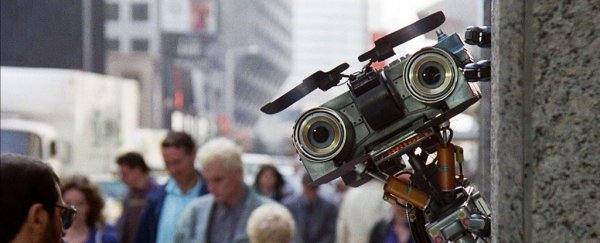Humans prefer interacting with robots that are flawed and make mistakes, according to new research, which could be crucial in helping experts work out how to build the robot interfaces of the future.
If we're perhaps one day going to be getting our cars fixed and our lawns mown by robots then we need to make sure everyone's getting along, which is the concern of a relatively new field of study called social robotics.
In this case, people reacted much better to robots that showed faulty behaviour, which was then corrected based on human feedback, rather than perfectly performing droids, according to the team from Austria and the UK.
"Our results show that decoding a human's social signals can help the robot understand that there is an error and subsequently react accordingly," says one of the researchers, Nicole Mirnig from the University of Salzburg in Austria.
While we tend to think of robots as perfectly functioning automatons, that's not completely true, which is why the scientists behind this study wanted to introduce a few mistakes.
A total of 45 human participants were asked to spend two sessions with a robot, first in the form of a verbal conversation and then to try and build a Lego object together.
The robots were programmed to occasionally make mistakes, while the human volunteers were asked to rate the likeability, anthropomorphism, and perceived intelligence of their new android friends.
For example, a participant might be instructed by the robot to throw a Lego block on the floor rather than place it on the table. By noting laughter or hesitation in the participant, the robot could realise that it had gone wrong, and make corrections.
Not only were the faulty robots rated as more likeable, they weren't rated as significantly less intelligent or anthropomorphic.
The researchers suggest something like the Pratfall effect might be happening – where imperfections can add to someone's attractiveness.
That's not to say we should be programming robots to cause blunder after blunder on the production line or in the surgery room, but when designing robots that need to interact with human beings, it might help to take off some of the sharp edges.
By having robots look to us for guidance and react to our cues when they've not done something right, a lot could be done to improve human-robot relations, according to the team behind the study.
And not only will we get on better with our new mechanical buddies, but our interactions with them could be made more natural if we know they're not quite perfect.
As an added bonus, it might also give us a few more years of staying the dominant species on the planet before the robots try to outsmart us.
"We suppose that faulty instances of human-robot interaction are full with knowledge that can help us further improve the interactional quality in new dimensions," says Mirnig.
"We think that because most research focuses on perfect interaction, many potentially crucial aspects are overlooked."
The research has been published in Frontiers in Robotics and AI.
